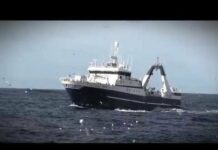Hello, everyone. Welcome to Learning TV. Here we are going to serve you with the video of marine animals. Have fun in exploring marine animals. In this video, you will watch the life of marine animals include the marine mammals, sea bird and ocean fishes
Back whale surprisingly despite their size humpback whales are not predators they filter krill or small pelagic fish feet and are completely harmless to humans other than through accidental collisions several huge creatures in the water including whale sharks basking sharks and other great whales use this life.
Cycle method humpback whales like other whales are creatures that give birth to huge calves these whales are famed for their singing males produce elaborate melodies to move females during porting only the killer whale is known to attack and devour humpback whales always juveniles.
Humpback whales make remarkable migrations between feeding and breeding locations every year individual humpback whales travel as much as 16 000 miles 25 000 kilometers between feeding at the poles and giving birth in the tropics each year humpback whales only consume at their winter feeding areas and survive the.
Rest of the year including throughout migration on fat stores the humpback whale was hunted almost to extinction during the peak of commercial whaling before regulators enforced a worldwide hunting prohibition in 1966 global populations had dropped by more than 90.
Fortunately the humpback whale has made a remarkable recovery and population growth continues this massive whale has now recovered from the verge of extinction to be classified as a species of least concern butler whales often known as orcas are the largest of the dolphins and one of the most powerful predators on the.
Planet the orca is a toothed whale that is the largest member of the oceanic dolphin family it has a black and white striped body that makes them instantly recognized orcas are intelligent and gregarious creatures who make a wide range of communicating sounds and each pod has.
Its own characteristic noises that its members can distinguish even from far they communicate and hunt by echolocation which involves producing underwater noises that travel until they hit objects then bouncing back to indicate their location size and shape orcas are a cosmopolitan species that may be found in all of the world's.
Oceans in a variety of marine settings orcas can be found anywhere from the polar regions to the equator despite their preference for cold coastal waters they're at the top of the food chain and eat a wide variety of animals including fish penguins and marine mammals like seals sea lions and even whales with four inch long fangs.
Seals have been known to be snatched from the ice by these predators fish squid and seabirds are among their favorite foods orcas have also been seen preying on terrestrial species such as deer swimming between islands off north america's northwest coast orcas hunt in family groups of up to 40 individuals known as pods.
Orca pod populations appear to be resident in transitory these various groups may prey on a variety of animals and catch them using a variety of methods fish are preferred by resident pods while marine animals are preferred by transient pods orcas may hunt on cormorants and gulls.
In numerous regions at marineland of canada a caged orca realized it could spew fish onto the surface attracting seagulls and then consume the birds the behavior was then copied by four other people orcas are fiercely protective of their young and other adolescent females frequently aid with their care.
After a 17-month pregnancy mothers give birth every three to ten years they only have one baby at a time and that infant can nurse for up to two years the relationship between the juvenile and its mother will usually break over time and the young orca will go its own way although in certain pods the.
Juvenile may spend its entire life with the pod into which it was born orcas are highly intelligent gregarious mammals who have long been used as part of marine park entertainment putting on displays for visitors they've evolved to swim up to 40 miles every day in search of food and exercise every day they die from 100 to 500 feet.
Orcas born in the wild or in captivity have the same intrinsic desire to swim long distances and dive deep orcas in captivity do not have access to that kind of range which contributes to boredom and stress orcas live in tight-knit family groupings in the wild according to study and they share a sophisticated.
Distinctive culture that has passed down through generations orcas in captivity are kept in social groups that are artificial orcas born in captivity are frequently moved from facility to facility disrupting social bonds orcas in captivity lack the capacity to avoid conflict with other orcas or.
Engage in normal swimming patterns in pools adding to the stress of social disruption wild orcas are not considered a threat to humans no fatal attacks have ever been observed at marine theme parks captive orcas have been known to kill or injure their handlers orcas appear frequently in indigenous.
Nations mythology and their reputation varies widely ranging from human souls to deadly killers seal the gray seal is found in north atlantic seas and is separated into three stocks the north atlantic baltic sea and eastern north atlantic stocks gray seals are exposed to cold temperatures and sub-arctic conditions.
In these waters males will come ashore to mate especially on ice and may often compete with one another for females females stay on land at rookeries or breeding grounds to care for their newborn babies these pups are born with a bright white coat that makes them indistinguishable.
In comparison to their parents but they will swiftly shed this coat in favor of the mottled brown and silver coat that adults have a gray seal pup can acquire up to three pounds per day from birth to three weeks old by eating the mother's nutrient-rich milk while waiting to shed its lighter fur.
Before going to sea and scattering across broad distances a pup can survive for several weeks on fat reserves gray seal males can grow to be 10 feet long and weigh more than 850 pounds while females grow to be 7.5 feet long and weigh 550 pounds adult gray seals frequent the ocean to search for food such as fish crabs squid.
And octopus while they are not on shore consuming four to six percent of their body weight each day a gray seal can dive to depths of up to 230 feet on average to consume fish and other critters or to bring larger food to the surface to be broken up and eaten in pieces a gray seal has the ability to hold its.
Breath for up to an hour at a time grey seals will occasionally participate in social feeding which involves many individuals working together to keep prey from swimming away as they lay on the ocean surface keeping their head and neck above the water to breathe gray seals can become prey for killer whales and sharks.
Ooga's whale beluga's whale on the other hand are often wider than narwhals measuring roughly 18 feet in length the only species of whales and dolphins that has a movable neck is the beluga whale belugas have the ability to move their heads up and down as well as side to side belugas are sociable forming groups of.
10 individuals on average so they can congregate in the hundreds or thousands in estuaries and shallow coastal areas throughout the summer they swim slowly but may dive to 700 meters below the surface they are opportunistic eaters and their diets change depending on where they are and what season it is.
The arctic ocean as well as the waters and coasts around north america russia and greenland are home to the majority of beluga whales their global population is estimated to be around 200 000 they are migratory and the majority of groups spend the winter near the arctic ice cover before moving to warmer river estuaries and coastal locations when the.
Sea ice melts in the summer some populations are sedentary meaning they don't travel long distances during the year beluga whales can only be found in the arctic ocean and its surrounding waters during the summer they eat in shallow coastal waters while during the winter they feed along the ice edge.
Some populations migrate for significant periods of time during the year while others are more permanent in character they consume a wide range of fish and invertebrate species beluga whales have been known to be attacked and eaten by killer whales and polar bears scientists believe beluga whales may swim far into ice-covered waters to.
Avoid orcas but this puts them at risk of polar bear predation polar bears use their enormous power to pull belugas onto the ice surface whenever they come to a hole to breathe when hunting the beluga is considered to be on the verge of extinction by conservationists beluga habitat is being impacted by.
Climate change and chemical pollution in the arctic is particularly terrible putting the health of huge predators like this species in jeopardy indigenous peoples hunt these whales lawfully all throughout the arctic but the continued hunt isn't regarded to be a threat to the species climate change and pollution are.
Anticipated to be increasingly serious threats to beluga populations while more research is needed before accurate forecasts can be produced dugong the dugong is a type of marine mammal the dugong like all other sea cows eats only plants it grazes largely on sea grasses and.
Thus spends the majority of its time in seagrass beds because their diet consists primarily of sea grass dugongs and other cyrenians are referred to as sea cows when they eat they consume the entire plant including the roots yet if this is not possible they will only eat the leaves.
Dugong's stomach contents have been reported to contain a wide variety of seagrass and there is evidence that they will eat algae when seagrass is limited although almost entirely herbivorous they do eat invertebrates including jellyfish sea squirts and shellfish on occasion the majority of dugongs feed in regions.
Where the sea grass is limited rather than in lush areas the value of a seagrass bed is also affected by other characteristics such as protein concentration and regenerating ability seagrass chemical structure and composition are significant and the most commonly eaten grass species are low in.
Fiber high in nitrogen and easily digested the dugong unlike its close relatives the manatees never enters freshwater and is hence the sole herbivorous marine animal the brain of the dugong like that of most herbivores is small in comparison to its physical size owing to the fact.
That it does not need to develop intricate hunting methods to catch prey internal fertilization allows dugongs to procreate and give birth to enormous young which they nurse for up to a year and a half adult dugongs have no natural predators but juvenile dugongs are vulnerable to saltwater crocodiles killer whales and.
Large coastal sharks throughout much of its range the dugong enjoys partial or complete legal protection although it is still pursued in some areas and is threatened by habitat degradation boat collisions and accidental capture in fisheries targeting other species scientists believe the dugong is.
Vulnerable to extinction because populations are low in some areas and regionally extinct in others the dugong could become extinct in additional places if human activities that threaten it are not carefully managed common bottlenose dolphins common bottlenose dolphins can grow to be quite.
Large weighing up to 640 kilograms and up to four meters in length they have a reasonably lengthy lifespan of about 40 to 50 years in sexual maturity between the ages of 5 and 14. some animals are known to be reproductively active throughout their lifetimes which is a unique trait among mammals.
Common bottlenose dolphins breed by internal fertilization as do all animals and females give birth to lip pups juveniles can swim from the moment they are born but for nearly two years they are completely reliant on their mother's milk common bottlenose dolphins migrate in groups or individually and the groups.
Frequently split up and reunite their journey is marked by steady movement in the same direction tight group formations sluggish movement and pauses of deliberate breathing are common characteristics of resting breeding playing aggression and gentle body contact like rubbing are all examples of social behavior.
While swimming calves swim in a position known as baby position the calf has easy access to nursing in this posture and it may benefit from the reduced drag of swimming in its mother's slip stream in baby position the mother emerges first followed by the calf who emerges somewhat later into the sight of its.
Mother common bottlenose dolphins may live in a variety of habitats and eat a wide range of prey including fish squid and crustaceans such as crabs and shrimp they seek and capture prey using a variety of strategies either alone or together for example they cooperate together to herd fish into groups before.
Dashing through the school to feed them they may also use sand bars and sea walls to capture schools of fish for an easy meal to locate prey they use passive listening and high frequency echolocation common bottlenose dolphins grab fish with their teeth instead of chewing then.
Swallow the fish hole to avoid the fish's spines catching in their throats common bottlenose dolphins and other dolphins are regarded to be among the world's smartest mammals competing with chimps and gorillas for first place they're also quite interested and they'll approach others to find out more their intricate social structures are.
Likely both a result of and a driver of their intellect when mating and hunting they usually dwell in small groups and organize intricate collective activities small schooling fish and squids are among their favorite prey adult common bottlenose dolphins are not known to have predators and juveniles are likely.
Only taken by huge sharks or other predatory marine animals on rare occasions this species is sought for human consumption and is fishing bait in a number of locations across the world but global numbers are thought to be in good form although population trends for common.
Bottlenose dolphins are unknown scientists feel they are a species of least concern common bottlenose dolphins can be found all over the world in temperate and tropical waters they can be found in a broad range of habitats including harbors bays gulfs and estuaries as well as near shore.
Coastal waters deeper areas off the continental shelf and even far out in the open ocean bottlenose dolphins can be found in the united states off the coasts of california oregon and washington as well as the hawaiian islands the east coast from massachusetts to florida the gulf of mexico and the caribbean.
Common bottlenose dolphins are easy to see in the wild yet this puts them at risk of being injured or killed by humans feeding dolphins or attempting to feed dolphins is hazardous because it alters their behavior and makes them less wary of people and vessels by begging for favors and grabbing bait.
Directly off fishing gear they learn to link humans with food and modify their natural hunting habits these unusual and dangerous feeding practices are also learned by other dolphins especially calves dolphins are then more exposed to vessel strikes entanglements and ingestion of fishing gear.
They may also be subjected to severe retaliation including a shooting by enraged boaters and fishermen polar bears polar bears are vicious predators who eat a wide variety of animals they spend the most of the year hunting ringed seal and bearded seal pups on.
Arctic sea ice polar bears have a keen sense of smell and can find babies hidden in snow caves polar bears may readily break through dens and dine on defenseless pups thanks to their size and power adult males have also been observed attacking and pulling huge aquatic species onto the ice surface such as.
Beluga whales polar bears scavenge for dead animal matter when on land rather than on the surface of the ice there is no natural predator for this species it's one of the few species that's considered higher in the food chain than humans although courtship and mating take place.
On the ice most births take place on land females usually have two pups each weighing no more than a couple pounds one kilogram cubs nurse for at least two and a half years and the mother polar bear like other bears is fiercely protective of her cubs.
Between the ages of four and six polar bears reach sexual maturity polar bear populations are declining over their entire range and some populations have been severely depleted scientists now think the species is on the verge of extinction despite the fact that polar bears are hunted climate change is the biggest threat to their.
Survival this bear is inextricably linked to arctic sea ice and seals that rely on it for breeding and in the face of climate change that ice is anticipated to decrease and melt quicker each summer polar bears may not be able to adapt to these quickly changing environments according to scientists because it.
Spends so much of the year at water the polar bear is a marine mammal it is however the only extant marine mammal with enormous powerful limbs and feet that allow it to walk and run for kilometers on land its preferred habitat is the arctic inter-island archipelagos in the yearly sea ice that covers the continental.
Shelf when compared to the deep waters of the high arctic these areas known as the arctic ring of life have a high biological productivity the polar bear prefers to hunt the seals that make up the majority of its diet at places where sea ice meets water such as pollinators and leads temporary spans of.
Open water and arctic ice the walrus is a huge flippered marine mammal with a sporadic distribution in the arctic ocean and sub-arctic seas of the northern hemisphere around the north pole adult walruses are distinguished by their enormous tusks and whiskers as well as their size adult males in the.
Pacific can weigh over 2000 kilograms walruses spend much of their time on the sea ice seeking for benthic bivalve mollusks to feed and they reside largely in shallow waters above the continental shelves walruses are sociable animals with a long lifespan and they are considered a keystone species in the arctic maritime.
Environment the walrus has just two natural predators due to its large size and tusks the orca and the polar bear the walrus on the other hand is not a big part of any of these predators diets orcas and polar bears are the most likely predators of walrus calves the polar bear hunts the walrus by.
Rushing at beached aggregations and eating the individuals who are crushed or injured in the abrupt exodus which are usually younger or infirm animals when walruses overwinter and are unable to flee a charging bear due to inaccessible diving holes on the ice bears isolate them even an injured walrus on the other hand.
Is a tough opponent for a polar bear and direct attacks are uncommon walruses have been known to mortally harm polar bears in confrontations with their ivory tusks if the latter follows the former into the water where the bear is at a disadvantage polar bear walrus conflicts are notoriously long and laborious and bears.
Have been known to flee the scene after hurting a walrus orcas routinely attack walruses yet walruses are thought to have successfully protected themselves against the larger cetacean by counter-attacking orcas on the other hand have been seen effectively attacking walruses with.
Minimal or no injury male walruses are territorial males have aquatic rather than territories during mating season because mating takes place in the water rather than on beaches or on the ice surface as it does in other species dominant males mate with multiple females in their territory and defend.
Their females from other males question 1 which of the following is not a marine mammals you have 10 seconds to think the answer is penguin penguin is a type of sea bird question 2 what does dugang eat you have 10 seconds to think of the answer.
seagrass's dugongs are known as sea cows because they graze on seagrasses that they remove from the sea floor with their muscular split upper lips question 3 which of the following marine mammals have tusk or tooth you have 10 seconds to think of the answer.
Narwhal the narwhal is a toothed whale of medium size with a huge tusk made of a protruding canine tooth penguin a group of aquatic flightless birds known as penguins except for the galapagos penguin they dwell almost entirely in the southern hemisphere penguins have dark and white.
Counter-shaded plumage and flippers for swimming making them well adapted to live in the sea most penguins eat krill fish squid and other sea creatures that they catch while swimming beneath the surface they spend around half of their life on land and the other half in the water the emperor penguin is the largest.
Living penguin species adults stand around 1.1 meters tall and weigh 35 kilograms the little blue penguin commonly known as the fairy penguin is the smallest penguin species standing around 33 centimeters tall and weighing one kilogram today larger penguins tend to live in.
Colder climes whereas smaller penguins prefer temperate or tropical climates now we are going to study some species of penguins let's get started ellie penguin the adelie penguin is a species of penguin that can be found solely on the antarctic continents coast it is the most widely dispersed penguin species and together with the emperor.
Penguin the most southerly of all penguins predation and foraging provide food for adelie penguins who eat primarily krill and fish the adelie penguin is a medium-sized bird that ranges in length from 70 to 73 centimeters and weighs between 3.8 and 8.2 kilogram.
Females have shorter wings and beaks and weigh less than males despite their similar appearance the adult's head throat and upper parts are black while the under parts are milky white a white eye ring surrounds a black iris only the tip of the beak is revealed which is mostly black with some.
Reddish-brown patterns the wing's upper surface is black with a white trailing edge while the underside is white with a short black leading edge and a little black tip pinkish legs and feet the chick is coated with down feathers from the moment it hatches the feather coat is usually silvery gray.
Darker on the head while some birds have a significantly darker overall color within 10 days the chick molts into a new set of dark smoky gray down feathers immature birds have a bluer tinge to their upper parts in white rather than black chins and throats after they have molded a third time about seven to nine weeks after hatching.
Until they are at least a year old they lack the entire white eye ring of adults during the chick-rearing season the adelie penguin is reported to feed mostly on antarctic krill ice krill antarctic silverfish sea krill and glacial squid diet varies depending on geographic region the stable isotope record of fossil.
Eggshell accumulated in colonies over the last 38 thousand years suggests a 200 year old abrupt switch from a fish-based diet to krill jellyfish were discovered to be actively sought after food items contrary to popular belief that they were only eaten by mistake because their freezing surroundings.
Provide little fresh water adelie penguins are subjected to harsh osmotic conditions because of the arid circumstances the vast majority of the accessible water is highly saline adelie penguins diets are high in salt they get around this difficulty by feeding krill with internal salt.
Concentrations at the lower end of their range which helps to reduce the quantity of salt swallowed the amount of sodium imposed by this type of diet is still quite high which can cause problems for the less tolerant females adult adelie penguins feed their babies by regurgitating pre-digested krill.
Which might cause the chicks to consume an excessive amount of salt adult birds solve the difficulty by changing the ion concentrations in their stomachs while the food is still being digested adult adelie penguins protect their babies from swallowing too much salt by eliminating a portion of the sodium and.
Potassium ions adelie penguins also control their salt intake by concentrating clocal fluids to a far greater extent than most other birds in adelie penguins this capacity is present regardless of ontogeny indicating that both adults and juveniles can endure high salt ion.
Concentrations chicks on the other hand have a higher ability to concentrate chloride ions in their clocal fluids the excretion of excess salts is also aided by salt glands nasal salt glands secrete an extraordinarily concentrated sodium chloride solution in aquatic birds like the adelie penguin lessening.
The strain on their kidneys the preservation of antarctic ecosystems depends on these excretions thousands of penguins can live in a rookery all of whom are concentrating waste materials in their digestive systems and nasal glands these excrements will eventually fall to the earth the presence of salts and.
Nitrogenous wastes aids in the transfer of material from the sea to the land making it more livable for bacteria that dwell in soils emperor penguin the emperor penguin is unique to antarctica and is the tallest and heaviest of all living penguin species the male and female are comparable in.
Appearance and size reaching a length of 100 centimeters and weighing between 22 and 45 kilogram the black head and back feathers contrast sharply with the white abdomen pale yellow breast and vivid yellow ear patches it is flightless with a streamlined body and stiffened and flattened wings that.
Have been turned into flippers for use in a marine environment like all penguins its primary food is fish although it also eats crustaceans like krill and cephalopods like squid the species can dive to a depth of 535 meters and stay below for roughly 20 minutes while hunting.
It has various adaptations to help it do so including an abnormally structured hemoglobin that allows it to function at low oxygen levels strong bones that decrease barotrauma and the capacity to lower its metabolism and turn down non-essential organ functions emperor penguins are the only penguin species that breeds throughout the.
Antarctic winter trekking 50 to 120 kilometers over the ice to breeding colonies that can have thousands of individuals the female lays a single egg which the male incubates for about over two months while the female goes out to eat the parents then alternate foraging at sea and caring for their child in the colony.
In the wild the average lifespan is 20 years while some individuals have been observed to live to be 50 years old emperor penguins like all penguin species have streamlined bodies to reduce drag when swimming in stiff flat flippers for wings barbs on the back of the tongue prevent prey from fleeing after it is trapped.
Males and females are around the same size and color the dorsal feathers of the adult are dark black and cover the head chin throat back dorsal region of the flippers and tail the black plumage contrasts sharply with the light colored feathers found elsewhere the undersides of the wings and belly.
Are white while the upper breast is pale yellow with brilliant yellow ear patches the eight centimeters long bill's upper mandible is black while the lower mandible is pink orange or lilac the auricular patches chin and throat of youngsters are white while the bill is black emperor penguin chicks have black heads.
And white masks and are coated in silver gray down after hatching chicks weigh roughly 315 grams and fledge when they reach around 50 percent of adult weight from november to february the antarctic summer the emperor penguin's dark plumage fades to brown before the yearly molt in january and february in.
Comparison to other birds this species molding is quick taking only 34 days to help prevent heat loss emperor penguin feathers emerge from the skin after they have developed to a third of their total length and before old feathers are shed before concluding their growth new feathers push out the old ones.
An adult emperor penguin has a 95.1 annual survival rate and a 19.9 year life expectancy the emperor penguin can thermoregulate keep its core body temperature constant over a wide temperature range without changing its metabolism little gulls little gulls breed in northern europe and the paley arctic in.
Portions of southern canada it also has minor colonies it is a migratory bird that spends the winter on the shores of western europe the mediterranean and the northeastern united states non-breeding birds have been seen summering in western europe in recent years with a length of 25 to 30 centimeters a wingspan of 61 to 78 centimeters and a.
Weight of 68 to 162 grams this is the smallest gull species it has a black helmet dark underwings and a pinkish flush on the breast in breeding plumage apart from a darker cap and eye spot the head turns white in winter the legs are dark red and the bill is slender in black.
These gulls collect insects in the air as well as picking food from the water surface european herring gull the european herring gull is a huge seagull that inhabits throughout the north atlantic coast of europe and westernmost asia it is one of about 55 species of.
Seagulls the heads and bodies of adults are predominantly white with grey wings it is a widespread species that may be recognized from superficially similar species by body size and geographic location the european herring gull is one of europe's largest gulls measuring more than 60 centimeters in length.
The european herring gull like many other seagulls feeds on a range of species and will hunt or scavenge for food they eat a wide range of living coastal invertebrates as well as human rubbish garbage comprises a significant portion of this gull's food in today's human habitat.
European herring gulls attack nests and consume both eggs and young birds when other seabirds create breeding colonies during the breeding season they eat a lot of small pelagic fish individuals in the range's northernmost reaches migrate to warmer latitudes in the winter and then return to their breeding grounds in the spring.
European herring gulls like all seabirds breed on land males arrive first to protect territory which females will only approach if they want a mate internal fertilization is used to procreate and females lay fertilized eggs directly on the ground both on rocky and sandy beaches the eggs are incubated and cared for by.
Both men and females european herring gulls can be life partners in some situations the european herring gull is a widespread species with low conservation concern across its range however in some areas populations are declining as a result of disease pollution and habitat degradation.
This downward tendency does not pose a threat to the species survival at this time european herring goals may actually increase in numbers in deteriorated settings they thrive in regions where there is a lot of human disturbance like construction sites and landfill operations seagulls often known as gulls or sea.
Birds goals range in size from the small gull weighing 120 grams and measuring 29 centimeters to the great black-backed gull weighing 1.75 kilograms and measuring 76 centimeters they have large bodies long wings and somewhat long necks and are generally uniform in shape except for sabine's gull and.
Swallow-tailed gulls which have forked tails and ross's gull which has a wedge-shaped tail all species have rounded tails gulls have somewhat lengthy legs with fully webbed feet the bill is typically hefty and hooked with bigger species having stouter bills than smaller ones in the bigger white-headed species the.
Bill is yellow with a red spot while in the lesser species the bill is crimson dark red or black their strong wailing or squawking sounds sturdy longish bills and webbed feet are characteristic the majority of gulls are ground nesting carnivores who scavenge or consume live food.
Crustaceans mollusks fish and tiny birds are among the most common live foods gull's unhinging jaws allow them to eat huge food gulls are usually found on the coast or in the inland it can take up to four years for large species to reach full adult plumage although small gulls usually take two years the herring gull has been known to live.
To be 49 years old gulls build their nests in big loud colonies that are densely packed in vegetation-filled nests they lay two or three speckled eggs the young are born with black mottled down and are mobile as soon as they hatch gulls particularly the bigger species.
Are resourceful inquisitive and clever with intricate communication systems and a well-developed social organization mobbing behavior is seen in many gull colonies when predators and other intruders are attacked and harassed the herring gull for example has demonstrated tool use behavior by utilizing bread as bait to catch.
Goldfish many gull species have successfully coexisted with humans and thrived in human environments others feed themselves through kleptoparasitism gulls have been seen preying on living whales landing on the surface of the whale and pecking meat from it gulls are omnivorous feeders indeed they.
Are the least specialized of all seabirds and their anatomy allows them to swim fly and walk equally well they can walk on land better than most other seabirds and smaller gulls are more maneuverable while walking gulls have a modest side to side motion in their walking gate which can be accentuated in breeding displays.
They have the ability to hover in the air and can take off swiftly with minimal room question 1 which of the following are not a seabird you have 10 seconds to answer the answer is dolphin dolphin is a types of marine mammals.
Question 2 where do european herringbreed european herring gulls like all seabirds breed on land question 3 what are the factors of extinction of marine animals.
Marine animals are endangered due to habitat degradation disturbance and pollution blue marlin the blue marlin is one of the world's fastest and most powerful predators as well as one of the most prized game fish the blue marlin is one of the largest.
Bony fish species weighing at least 820 kilograms and measuring more than five meters long the large bill that emerges from the front of the blue marlin's head is well known this bill is used by blue marlin to shock their target by slicing their head side to side knocking potential prey.
Unconscious and making it easier to grab the bill of a blue marlin is round and pointed as opposed to flat and blunt like that of a swordfish or a sailfish blue marlin like many other open ocean bony fish start life as tiny larvae that are just a few millimeters long and a few hundredths of a gram in weight they have a visible bill from the moment.
They hatch blue marlin are fast growing fish that can increase their body weight by a million times throughout the course of their lives blue marlin devour a wide variety of prey during their lives due to their incredible size metamorphosis from virtually tiny to one of the largest open ocean predators they feed.
Microscopic zooplankton when they're young and as they grow older their prey grows larger adults consume squids and huge bony fish similarly a wide range of predators devour blue marlin other fish that specialize on eating plankton devour them when they're young adult blue marlin are only eaten by.
Giant open ocean shark species since their predators grow in size as they develop individuals of the blue marlin migrate throughout ocean basins and even between oceans making it a highly migratory species one person was tagged and recaptured in the indian ocean after being tagged off.
The coast of the western atlantic ocean females are larger than males as with many migratory species female blue marlin can grow to be four times the size of males females make up the entire population the female releases her eggs into the water column while the male releases his sperm which is how blue marlin reproduce.
Fertilization occurs when the sperm find the eggs a single female may release several million eggs during spawning increasing the chances that some will be fertilized and at least one larva will grow to adulthood blue marlin and other billfish have a particular blood vessel system called a.
Counter current exchanger that helps them to warm their brains and eyes despite being cold-blooded this adaptation gives them a significant edge in hunting since it allows them to think faster and see more clearly atlantic bluefin tuna the atlantic bluefin tuna is one of the ocean's fastest and most powerful predators it's.
The focus of several local and large-scale fisheries across its range historically they weighed up to 900 kilograms and measured nearly 4.6 meters in length the atlantic bluefin tuna is the world's largest tuna and easily the largest macro species atlantic bluefin tuna need a wide range.
Of prey but they appear to prefer pelagic fish and crustaceans that they can swallow atlantic bluefin tuna like many other open ocean bony fish start off as tiny larvae that are just a few millimeters long and weigh a few hundredths of a gram individuals reach sexual maturity and.
Reach a length of one meter in three to five years because atlantic bluff and tuna's growth are almost tiny to one of the largest open ocean predators they eat a diverse range of prey throughout their lives they feed microscopic zooplankton when they're young and their prey grows in size as they grow.
They devour huge bony fishes and invertebrates as adults similarly a wide range of predators other fish that specialize in eating plankton devour them when they are newly hatched their numbers are substantially reduced at that age those that survive will see their predators grow in size over time.
Ocean shark species leaf and tuna are known to be highly migratory with individuals traveling great are tied to distances with their spawning patterns and feeding requirements this species reproduces by releasing millions of eggs and sperm into the.
Water column at the same time this strategy raises the probability of the eggs being paralyzed while lowering the risks of egg predators eating them despite the fact that almost all fish are cold-blooded atlantic bluefin have a particular blood artery structure called a counter current exchanger that permits them to maintain a body temperature that.
Is when hunting in cold water this modification allows them to move more quickly and intelligently giving them a significant advantage the atlantic bluefin tuna is one of the ocean's quickest like swimmers shark species must swim constantly.
Fish carry water over their gills to collect oxygen from the water the tunas lack the ability to do so while stationary therefore they must swim forward with their mouths open all the time to keep your blood oxygenated the atlantic bluefin tuna is a desirable food species that is frequently fished across its entire range.
Its value in the top-end sushi market in japan and elsewhere is high enough for fishermen to go to great lengths to catch it butterflyfish has a small bodied fish that lives in the western atlantic ocean's coral reefs butterfly fishes have a spheroid body in a small mouth making them ideal for.
Biting minute worms and living delicate coral tissue banded butterfly fish use a variety of feeding methods despite the fact that they are commonly seen of as foraging predators who leisurely scour the reef surface for food some forage on the reef surface usually in pairs.
Others congregate in bigger groups to seek for microscopic plankton in the water column above the reef butterflyfish reproduce by broadcast spawning which involves a female releasing eggs and a male releasing sperm into the water column above the reef at the same time this strategy enhances the possibility.
That fertilized eggs will be moved away by currents rather being consumed by egg predators on the reef surface the banded butterfly fish unlike a number of other reef fish species does not breed in groups and instead establishes monogamous cuddles before spawning the butterfly fish is found only in the.
Caribbean basin in its surrounding waters it is hot for display in public and private aquariums so common clownfish the common clownfish is.
A popular children's cartoon and one of the most iconic coral reef species common clownfish like all clownfish also known as a nemen fish reside inside the tentacles of toxic anemones each individual's body is covered in mucus which protects the fish from the anemone's stinging cells which it utilizes to consume other fish.
In exchange the common clownfish removes parasites and fights away animals that could try to devour its host anemone common clownfish leave their host anemones tentacles to feed on occasion despite spending most of their life swimming among them they're plankton pickers meaning they look for and eat individual zooplankton or phytoplankton.
Floating in the water column they probably eat algae from the reef surface as well common clownfish have few predators because of the safety provided by their host anemones but they are vulnerable to predation when they leave the anemone to feed life cycle of a common clownfish is fascinating and unusual throughout their.
Lives clownfishes change their sex the transition from female to male is not uncommon in most species the male and female clownfish switch roles individuals all hatch as males and eventually form small groups in an anemone the largest female in each group is the only one who reproduces together with.
The largest male the male fertilizes the eggs laid by the huge dominant female on the reef's surface they protect the nest from egg predators until the eggs hatch if the female is killed the reproductive male changes sex and becomes the dominant female.
The group's next largest male then becomes reproductively active while the other males remain subservient in the aquarium industry the common clownfish is very popular others are dark black and white while some are brilliant orange and white this species is extremely coveted for public and private aquaria due to its.
Striking colors and interaction with anemones they've been collected for sale in that sector for a long time but modern efforts to increase reproduction in captivity have been successful so many of the ones for sale in pet stores have been raised in aquaria.
the term mackerel refers to a variety of pelagic fish species they live in temperate and tropical oceans primarily along the coast or offshore in an oceanic environment vertical stripes and deeply forked tails are characteristic of mackerel species many species have constrained.
Distribution ranges and reside in geographically distinct populations or fish stocks some stocks travel in huge groups along the coast to breeding areas in shallow water they return to suitable feeding sites in smaller groups after spawning often near an upwelling area they may then go.
Offshore to deeper waters where they will spend the winter dormant others cross oceans larger predators such as larger mackerel and atlantic cod feed on smaller mackerel following mackerel schools flocks of seabirds whales dolphins sharks and schools of larger fish like tuna and marlin attack them in clever and.
Cooperative ways humans heavily collect mackerel flesh which is strong in omega-3 oils commercial fishermen landed about 5 million tons of fish in 2009 the king mackerel's battling abilities are prized by sport fishermen mackerel are generally smaller and leaner than tuna however they share many features in.
Other ways if they have scales at all they are incredibly minuscule mackerel like tuna and bonito are voracious feeders and fast and agile swimmers able to streamline themselves by withdrawing their fins into body grooves their bodies are cylindrical like other scombroids with multiple finlets on the dorsal and ventral sides beneath the.
Dorsal and anal fins but they are slimmer than deep-bodied tuna mackerels have strong stripes on their backs that appear to provide camouflage against broken backgrounds however because mackerel reside in midwater pelagic areas with no backdrop this is not the case fish on the other hand have a visual.
System with an optokinetic reflex that can detect moving stripes fish need feedback mechanisms to assist them line themselves with nearby fish and match their speed in order to school efficiently schooling marks are provided by the stripes on neighboring fish which indicate changes in relative location.
Mackerel are prolific broadcast spawners and their eggs float thus they must reproduce at the surface of the water females lay between three hundred thousand and one million five hundred thousand eggs every year pelagic means that their eggs and larva float freely in the open sea zooplankton is consumed by the larval.
And juvenile mackerel they seek small crustaceans like copods forage fish shrimp and squid as adults with strong teeth tuna billfish sea lions sharks and pelicans are among the larger pelagic species that hunt them mackerel is a popular fish that is eaten all throughout the world.
It is high in omega-3 fatty acids because it is an oily fish mackerel flesh degrades quickly particularly in the tropics and can result in scombroid food illness as a result unless properly refrigerated or cured it should be consumed on the day of capture mackerel preservation is a difficult.
Task prior to the introduction of canning in the 19th century and the widespread availability of refrigeration the main preservation methods were salting and smoking emperor angelfish the emperor angelfish is a marine angelfish species it's a reef associated fish that can be found from the red sea to hawaii and the.
Austral islands in the indian and pacific oceans this species is normally found in stable populations and is not threatened with extinction because of its unusual vivid pattern of colors it is a favorite among photographers artists and aquarists juveniles and adults of the emperor.
Angelfish differ significantly the juveniles have a dark blue body with concentric curving lines varying between pale blue and white with the tiniest being totally encased within each other at the very front these lines become vertical the cottle fin is translucent with a white edge on the dorsal fin the adults have a light blue face with a.
Dark blue mask over the eyes and a yellow caudal fin with blue and yellow horizontal stripes above the pectoral fins is a blackish stripe that extends to the top of the upper orbit this band has a brilliant blue front margin and a small yellow line on the back the anal fin has a dark blue background.
With horizontal bars of lighter blue the anal fin has three spines and 18 to 21 soft rays whilst the dorsal fin has 13 to 14 spines and 17 to 21 soft rays the maximum overall length of this species is 40 centimeters the indo-pacific region is home to the emperor angelfish it can be found from the red sea to the tuitu islands and the.
Line islands as well as along the east african coast to mozambique in madagascar it stretches from northern japan to southern australia new caledonia and french polynesia's austral islands hawaii has had vagrants it's been spotted off the coasts of florida and puerto rico at multiple locations.
The emperor angelfish can be found at depths of one to 100 meters the adults are found on clear lagoon channel or seaward reefs where there is a dense growth of corals they are usually found beneath ledges and in caves subadults have been found in reef caves and along surge channels on seaward reefs.
Juveniles hide beneath ledges in reef caves and in somewhat sheltered spots in channels and across outer reef flats 6. sponge and other encrusting creatures as well as tunicates are part of its diet they couple up adults and adolescents may serve as cleaner fish removing ectoparasites from larger fish.
When scared these fish make a knocking sound the emperor angelfish is a popular aquarium fish shark sharks are creatures that live in water they are aquatic creatures that filter oxygen from the water via their gills.
Sharks are distinguished from other fish by the fact that their bodies are constructed of cartilage rather than bones as a top predator sharks have played an important role in keeping oceans healthy for hundreds of millions of years sharks come in a variety of sizes from 8 inches to 40 feet long and can be seen.
Swimming around the world's waters today however about one quarter of all sharks and their cousins are endangered shark fin demand is a key contributor the global fin trade consumes the fins of up to 73 million sharks each year bull sharks have been commercially fished in the past but their present.
Greatest concern is accidental capture in fisheries aimed at other species the majority of these unintentional captures occur when the sharks are upriver they are also sometimes targeted in shark culling operations intended to protect beachgoers and other tourists this action has not been demonstrated to.
Be successful in protecting swimmers and environmentalists and scientists generally oppose it bull sharks are rated near threatened with extinction due to the threats they face throughout their habitat this species may be endangered if population trends do not change the bull shark is one of the largest requiem.
Sharks reaching lengths of 3.5 meters and weighing up to 315 kilograms they are predators who devour a wide variety of prey they are known to devour a variety of bony fishes as well as small sharks mammals both terrestrial and marine seabirds and sea turtles on rare occasions there are no natural predators for large.
Adult bull sharks bull sharks do not reach sexual maturity until they are between 15 and 20 years old they mate through internal fertilization and have healthy live young bull sharks do not have a placenta and do not give live birth to their offspring instead the embryos survive on yolk sacs linked to each person during the.
Gestation period bull sharks do not swim in fresh water for short periods of time in some places such as the nicaragua river the zambezi river and the mississippi river they move far upriver and there is a semi-permanent population in lake nicaragua that was assumed to be a distinct species until recently.
They also give birth in fresh water according to reports bull sharks come into close contact with people during these long periods inland and the majority of occurrences when they bite people occur in rivers rather than the ocean nonetheless such occurrences are relatively uncommon when a bull shark.
Bites a human it usually takes only one exploratory bite before deciding that the individual is not its favorite target an exploratory bite unfortunately can be lethal or exceedingly distressing because of their size great white shark also known as the.
White shark white pointer or simply great white is a large mackerel shark that may be found in all major oceans coastal surface waters it's known for its size with larger females reaching 6.1 meters in length and weighing 1905 to 2268 kilograms when fully grown.
Males average 3.4 to 4.0 meters in height while girls average 4.6 to 4.9 meters the great white shark is an apex predator since it has no natural predators other than the orca which it encounters only on rare occasions it is the world's largest living macro predatory fish and one of the major.
Predators of marine mammals up to the size of enormous baleen whales other marine species that this shark is known to prey on include fish and seabirds it is logistically impossible to keep great white sharks in captivity due to their need to travel extensive distances for seasonal migration in their.
Extremely demanding diet as a result while attempts have been made in the past no known aquariums in the world are believed to house a living species a great white shark is the world's largest predatory fish capable of devouring marine creatures weighing hundreds of pounds the whale shark and the basking shark.
Both filter feeders that eat plankton are the only two fish that grow larger than great whites the great white on the other hand is a vicious predator with a powerful body capable of chasing down some of the ocean's quickest swimmers the great white's body is admirably fitted to a life of predation reaching.
Lengths of up to six meters and weights of many tons individuals of great white sharks are known to make extended annual migrations great white sharks move frequently between mexico and hawaii in the eastern pacific ocean individuals may move across even greater distances in other ocean basins females.
Are the larger individuals as they are in many highly migratory species great whites mate and give birth to a small number of huge young above 3 feet 1 meter by internal fertilization great white sharks do not have a placenta and do not give live birth to their offspring instead the mother feeds her.
Unfertilized eggs to her unborn children during the gestation period young great whites are natural predators from the moment they are born feeding on coastal fish the largest mature individuals like to consume marine mammals such as seals and sea lions as their favorite prey grows larger.
Great white sharks are known to descend to great depths most likely to feed on slow-moving fish and squids in the frigid depths great whites have a particular blood channel system called a counter current exchanger that allows them to maintain a body temperature that is greater than the surrounding water despite the fact.
That practically all fish are cold-blooded when hunting in cold water this adaption gives them a significant advantage by helping them to move more quickly and intelligently it's especially useful when hunting warm-blooded marine creatures that would otherwise be too energetic for great.
Whites to catch while great white sharks are one of the few animals known to bite and kill humans such incidents are extremely uncommon when a great white bites a human it usually just takes one experimental bite before deciding that the person is not its favorite target.
Unfortunately even an exploratory bite can be lethal or extremely unpleasant because to their enormous size giant manta ray the giant manta ray is the world's largest ray in one of the world's largest fish manta rays are substantially larger than any other ray species reaching diameters of up to 8.8 meters.
For decades there was only one known species of manta ray but scientists recently split it into two the large manta ray which is more oceanic and the reef manta ray which is more coastal giant mantas like the world's largest fish whale sharks and basking sharks and mammals blue whales consume microscopic plankton despite their enormous size.
Their enormous jaws are always open as they move along filtering plankton and other small food from the water giant mantas have specialized flaps called cephalic lobes that assist funnel more water and food into their mouths which aids with this method giant manta rays can be found in tropical subtropical and temperate areas.
All over the world and are frequently spotted off the coast in oceanic waters and near fruitful beaches long migrations are known for giant mantas and they may visit colder seas for a brief time each year despite the fact that gigantic mantas are primarily solitary creatures they do congregate to feed and mate.
The fertility of giant manta rays is among the lowest of any elasmo branches with only one pup born every two to three years there are still gaps in scientists knowledge of gigantic manta rays life history due to its wide range and sparse distribution over the world's oceans commercial fishing is the greatest.
Threat to gigantic manta rays as they are both targeted and caught as bycatch despite the fact that conservation measures have been implemented in many areas demand for manta and other mobula ray gill rakers has skyrocketed in asian markets.
so salmon salmon is a ray-finned fish belonging to the salmonity family salmon are native to the north atlantic and pacific ocean tributaries many salmon.
Species have been introduced into non-native habitats such as north america's great lakes and south america's patagonia in many regions of the world salmon are intensively farmed salmon are often anadromous meaning they hatch in fresh water migrate to the ocean and then breed in fresh water.
Several species on the other hand are confined to fresh water throughout their lives according to legend the fish spawn in the same area where they were born this is mainly true according to tracking studies a percentage of a returning salmon run may stray and breed in different freshwater systems the.
Percentage of strain varies by salmon species olfactory memory has been found to influence homing behavior pink salmon is an emblematic species of the north pacific ocean and one of the most significant fishing species over its whole range it grows to only 76 centimeters in.
Length and weighs only 6.8 kilogram it is significantly smaller than chinook salmon and other pacific salmon species the pink salmon takes its name from the color of its flesh which is a classic pink this species like all salmons is known for extended migrations and considerable physiological changes as it moves from.
Freshwater rivers to coastal waters and back to freshwater rivers pink salmon adults reside in coastal waters and eat primarily pelagic invertebrates these fish are primarily concerned with growing and storing energy that they will require for successful reproduction throughout the oceanic stage of their.
Life cycle this time is barely a few years long they undergo a long migration to their chosen spawning location sometimes far inland in freshwater rivers after they reach reproductive age at two years old interestingly despite mixing into enormous populations at sea each individual pink salmon usually returns.
To the river where it hatched to spawn thousands of individuals moved to and arrive at the same time at the spawning grounds females dig nests in light gravel and place their eggs on the riverbed after they arrive females bury the nests after the males fertilize the eggs externally pink.
Salmon do not eat during their long journey to spawn because the laborious work of swimming upstream jumping over rapids and waterfalls and excavating nests is too much for them to handle all individuals perish within a few days of spawning baby pink salmon slowly make their way to the ocean after hatching where they feed until they reach.
Maturity and repeat the cycle salmon are a significant source of food for sea lions and killer whales they are also a vital source of minerals and food for species living near spawning grounds where they all die bears predatory and scavenging birds wolves and a plethora of other species are among those threatened.
Even trees that develop near north pacific rivers are likely to rely on dead salmon for essential minerals pink salmon is a very significant fishery species across its range with net fisheries capturing tens of millions if not hundreds of millions of individuals each year overfishing climate change and damming.
Of major coastal rivers are all threats to pink salmon and some populations are severely endangered especially in the continental united states however the species as a whole is not now threatened with extinction dams that prevent pink salmon from accessing their preferred spawning sites are probably the greatest harmful human.
Impact on their populations right now seahorse the size of a seahorse can range from 1.5 to 35.5 centimeters their horse appearance with bent necks large snouted heads and a unique trunk and tail earned them the name they have thin skins stretched over a system of bone plates distributed in.
Rings throughout their body rather than scales despite being bony fish the number of rings in each species varies they are additionally protected from predators by their bone armor and they no longer have ribs due to their outer skeleton sea horses move vertically propelling themselves with their dorsal fin a trait.
Not shared by their pipefish relatives who swim horizontally the only other vertical swimming fish is the razor fish the pectoral fins which are placed behind their eyes on either side of the head are utilized to steer fishes do not have a cuddle fin the square-like rings on their prehensile tail can only be released under the most.
Extreme conditions they are good at camouflaging and depending on their environment they can grow and resorb spiky appendages a sea horse's neck is flexible and well defined which is unusual among fish it also has a coronet which is a crown-like spine or horn on its head that is unique to each species.
Sea horses swim slowly and steer with their pectoral fins sea horses consume with their long snouts however because they eat slowly and lack a stomach they must eat constantly to be alive because seahorses are poor swimmers they must attach themselves to seaweed coral or anything else that will keep them.
Afloat they do this by grasping the thing with their prehensile tails sea horses eat microscopic crustaceans that float in the water or crawl on the sea floor sea horses ambush prey that floats within striking range with their remarkable camouflage sitting and waiting for the right moment to strike.
Miced shrimp and other small crustaceans are favorites although other invertebrates and even larval fish have been reported the unusual head morphology of seahorses was shown to give them a hydrodynamic edge when approaching evasive food as a result the sea horse can get very near to the copods it eats.
The sea horse gives an upward thrust and rapidly spins the head supported by strong tendons that store and release elastic energy to get its long snout close to the prey after successfully closing in on it without alarming it because oral suction only works at a close range this phase is critical for prey acquisition.
Pivot feeding is the name for this two-phase prey capturing method preparatory expansive and recuperation feeding phases are all distinct in seahorses during the preliminary phase the seahorse approaches the prey slowly while standing upright then slowly flexes its head ventrally.
The seahorse takes its prey by simultaneously rising its head extending the buccal cavity and sucking in the prey item during the expansive phase the seahorse's jaws head and hyoid apparatus all returned to their previous locations during the recovery phase the seahorse's eating behavior is influenced by the amount of cover.
Available sea horses for example may sit and wait in natural places with little flora but in locations with abundant foliage the seahorse will investigate its surroundings and feed while swimming rather than waiting in an aquarium with limited flora the seahorse on the other hand would.
Thoroughly investigate its surroundings before sitting and waiting
We are excited to present to you the captivating video titled “Marine Animals Tour | Get to know marine animals | Marine Mammals | Seabird | Marine Fishes | Ocean”. Get ready to embark on a journey of enjoyment, smiles, and laughter as you watch this delightful creation. “Marine Animals Tour | Get to know marine animals | Marine Mammals | Seabird | Marine Fishes | Ocean” is a perfect blend of entertainment and amusement, carefully crafted to bring joy to your day. From the moment you press play, you’ll be greeted with a cascade of lighthearted moments, heartwarming scenes, and perhaps even a few surprises that will tickle your funny bone.
Whether you’re in need of a quick pick-me-up or simply looking for some light-hearted entertainment, “Marine Animals Tour | Get to know marine animals | Marine Mammals | Seabird | Marine Fishes | Ocean” has you covered. The video promises to deliver a collection of moments that are bound to leave you grinning from ear to ear. With its engaging content and skillful presentation, “Marine Animals Tour | Get to know marine animals | Marine Mammals | Seabird | Marine Fishes | Ocean” is more than just a video – it’s an experience designed to brighten your mood and spread positivity.
The creators of “Marine Animals Tour | Get to know marine animals | Marine Mammals | Seabird | Marine Fishes | Ocean” have poured their creativity and dedication into crafting a visual treat that resonates with audiences of all ages. Through expert storytelling, impeccable timing, and an array of engaging content, “Marine Animals Tour | Get to know marine animals | Marine Mammals | Seabird | Marine Fishes | Ocean” promises to be an unforgettable journey that lingers in your memory long after the video concludes.
So sit back, relax, and prepare to be entertained as you dive into the world of “Marine Animals Tour | Get to know marine animals | Marine Mammals | Seabird | Marine Fishes | Ocean”. It’s a delightful video that aims to bring a dose of happiness to your day, leaving you with a lasting smile and a heart full of laughter.
This video was uploaded in youtube and has recieved 4660 views so far. This is a great achievement and laso it has received 55 likes and .
Data bout the video:
Rating: ,
Video dimensions: 2d,
Video definition: hd,
Video duration: 01:10:22,
Video favourite count: 0
Video comment count: 4























